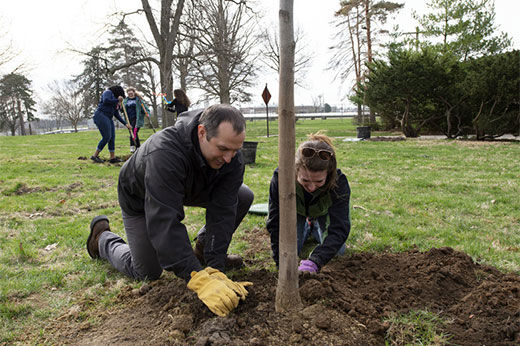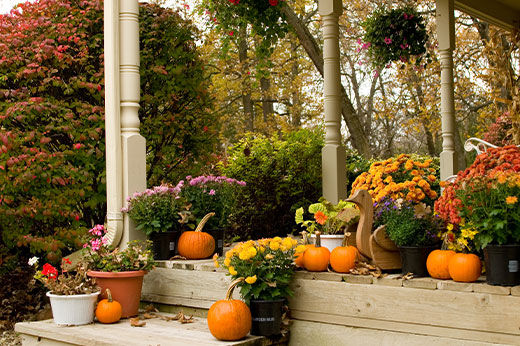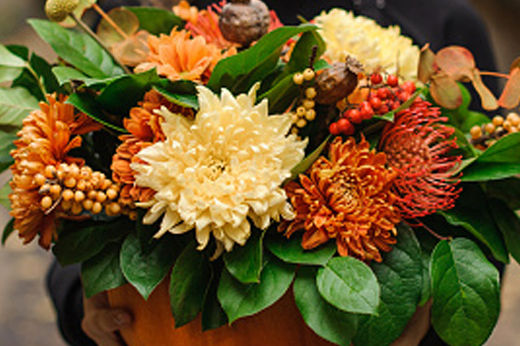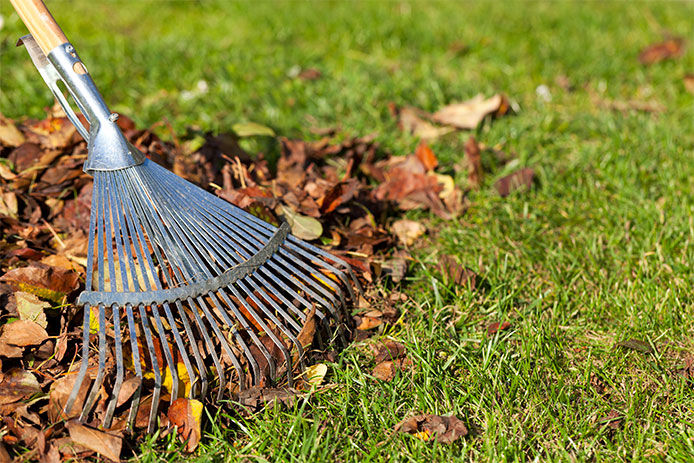While do-it-yourself projects can be fun and fulfilling, there is always a potential for personal injury or property damage. We strongly suggest that any project beyond your abilities be left to licensed professionals such as electricians, plumbers, and carpenters. Any action you take upon the information on this website is strictly at your own risk, and we assume no responsibility or liability for the contents of this article.
Fall Home Maintenance Checklist: 15 Things You Should Do Every Fall
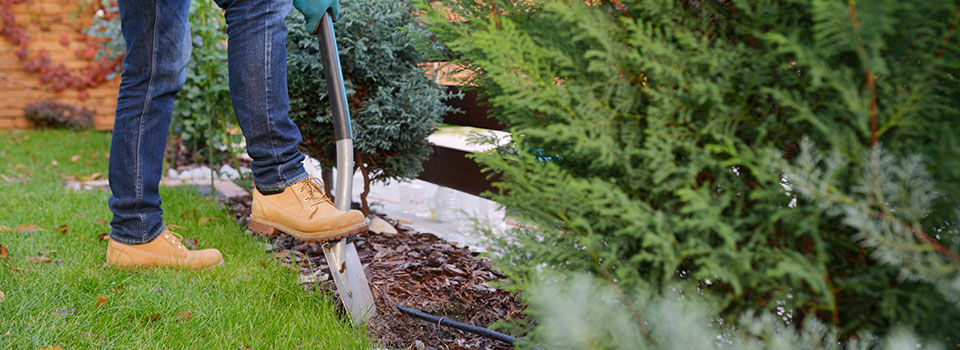
There are many things that need to be done to get ready for harsh winter weather. Leaves need to be raked, so they don’t affect your yard next spring. Gutters need to be cleaned, so they can withstand rain, snow, and ice, and many other outdoor projects come to mind this time of year. Don’t worry! We’ll help you prepare with these 15 outdoor projects designed to prep your home for cooler weather, and we’ll give you tips to make each job that much easier.
1. Rake Leaves
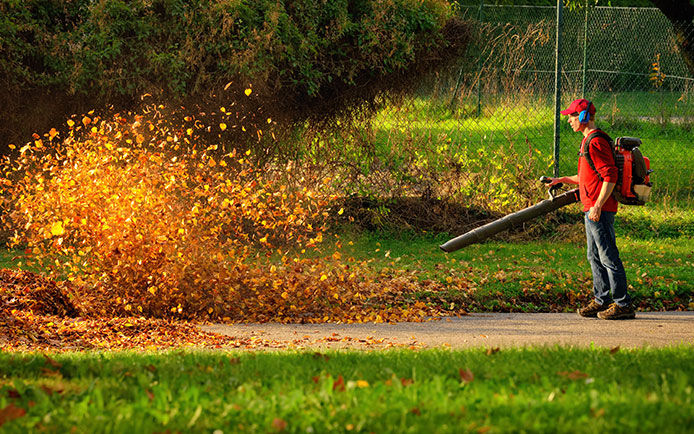
Autumn is arguably the most enjoyable season of the year: temperatures begin to cool off, the leaves begin to turn, and families can spend more time outside in the cool, comfortable weather. With leaves turning and the weather cooling though, you can expect to see your lawn covered with fallen leaves in a matter of days. Use a rake, or for a more efficient option, try a leaf blower. We’ll help you get things cleared up quickly with these 6 Leaf Cleanup Tips.
2. Clean Gutters
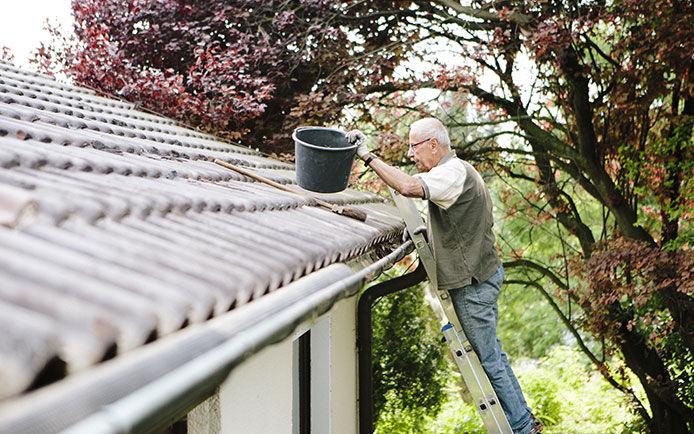
Along with researching how to make a crowd-pleasing spiced cider and the best time to buy holiday plane tickets, homeowners should research how to clean their gutters and ward off insects and other pests throughout the fall. To save you time, we’ve compiled a list of six autumn-savvy questions and answers about gutter maintenance designed to help you safeguard your property for fall and beyond.
3. Clean Fireplace or Wood Stove

Fireplaces are great to relax by and read a book or just add a little extra warmth to your home, but it’s very important to keep them clean. First, yearly inspections are a must. Whether you get your fireplace or wood stove inspected by a professional or learn to do it yourself, make it a yearly occurrence! You’ll want to check if there is ash or creosote buildup, which is a common cause of fire incidents. Creosote remover is a great way to break down buildup and it makes chimney cleaning easier!
4. Test Smoke Alarms
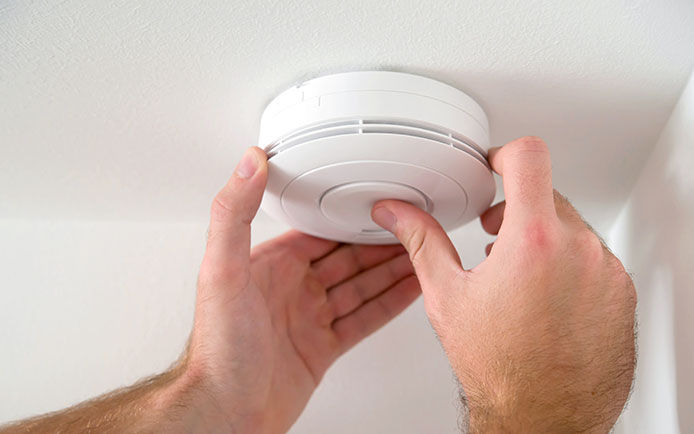
Working smoke alarms give you early warning so you can get outside quickly. Make sure to test your smoke alarms regularly to keep them in working order. Just follow these quick tips to keep your family safe:
- Test your smoke alarm batteries once a month.
- Replace batteries in battery-powered and hard-wired smoke alarms at least once a year.
- Install smoke alarms in every bedroom and outside of all sleeping areas.
- Smoke alarms should be on the ceiling or high on the wall.
- Smoke alarms should be at least 10 feet from the stove.
- Use interconnected smoke alarms, so that they all sound when one sounds.
- Smoke alarms are available for people who are hearing impaired that use strobe flashing lights to warn of possible fire.
For more fire safety tips, visit: How to Prevent House Fires.
5. Test Sump Pump

Sump pumps are essential for protecting your home against water damage during heavy-rains and serious storms. Sump pumps remove any excess water in your basement, crawlspaces and around your foundation, and transport that water away from your home. It’s important to test your sump pump twice a year, before the spring and fall seasons, so that you can avoid flooding and make sure it’s ready for when you need it. Luckily, testing your sump pump is easy and only takes a few minutes.
6. Seal Outdoor Surfaces
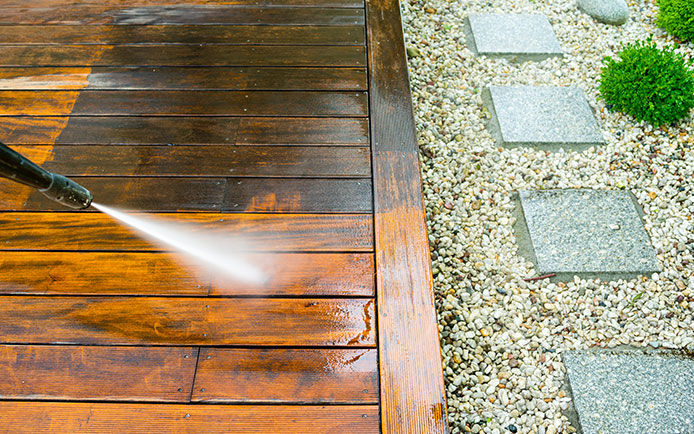
Cold temperatures, snow, and ice can all cause paint to peel, which leads to moisture setting in resulting in wood rot. To protect your exterior surfaces, like your wood deck or shutters, apply a stain or sealant. To help you, we’ve compiled a step-by-step guide detailing exactly How to Apply Deck Stain for the best results.
7. Shut Off Exterior Faucets & Store Hoses

As temperatures start to cool, it’s best to shut off the water supply to all outdoor faucets and then drain the line by turning on the faucet again. This will allow any residual water to clear out of the pipes completely. Also, drain all hoses and store them inside if possible. If you have to store hoses outside during cooler months, try to find a shed or overhang to protect them.
8. Weatherstrip Your Home

Drafts in your home are more than just an annoyance. They can also cause your heating and cooling bills to soar. Weatherstripping is a great way to seal cracks, gaps, and holes to prevent outside air from getting into your house. To save money and keep your home comfortable, check out these tips for weatherstripping your home.
9. Check Your Heating System

Before the temperatures drop, you’ll want to ensure your heating system is in good shape. Replace the filters in your furnace or heating system to improve efficiency and air quality. It’s also wise to schedule a professional inspection to check for any issues that could cause breakdowns during the coldest months. The last thing you want is to be stuck in a freezing cold house with no heat!
10. Inspect Roof
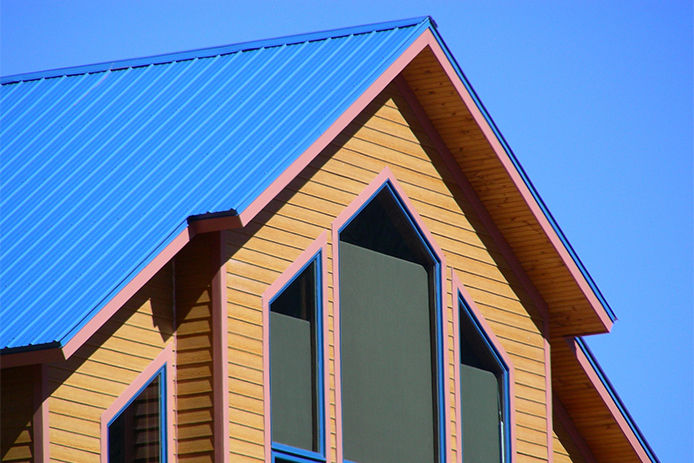
Fall is a great time to inspect your roof before winter weather arrives. Along with checking your gutters as mentioned before, look for any missing, damaged, or loose shingles that could lead to leaks or further damage when snow and ice pile up. Also, check for any signs of water damage inside your attic or on the ceilings.
11. Prepare Your Lawn & Garden
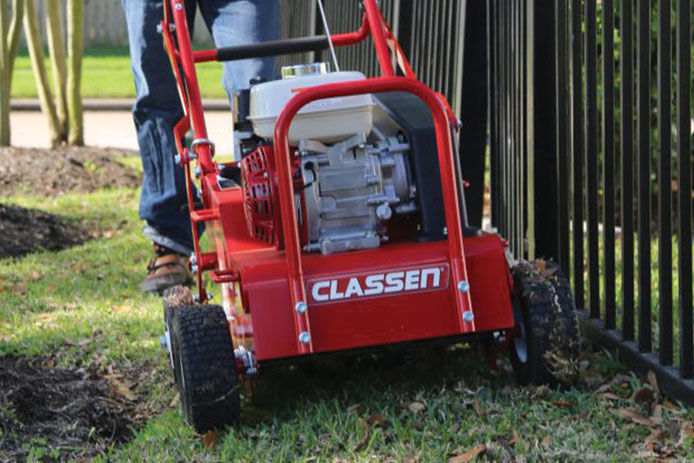
Fall is the time to prepare your lawn and garden for winter. Aside from raking leaves, you’ll want to aerate your lawn to help it breathe. It’s smart to overseed your lawn in fall and apply fertilizer to strengthen the grass roots for the colder months. This ensures a fast-growing, healthy lawn come spring. Consider cutting back perennials, planting fall bulbs, and applying a layer of mulch to protect your plants through the winter. Check out our articles on the best flowers to grow in fall and how to boost fall blooms.
12. Check Insulation

Proper insulation is key to keeping your home warm during the colder months. Inspect the insulation in your attic, walls, and basement to ensure there are no gaps or areas where heat could escape. Adding or replacing insulation, especially in the attic, can help keep a consistent temperature in your home and lower heating costs.
13. Winterize Outdoor Equipment
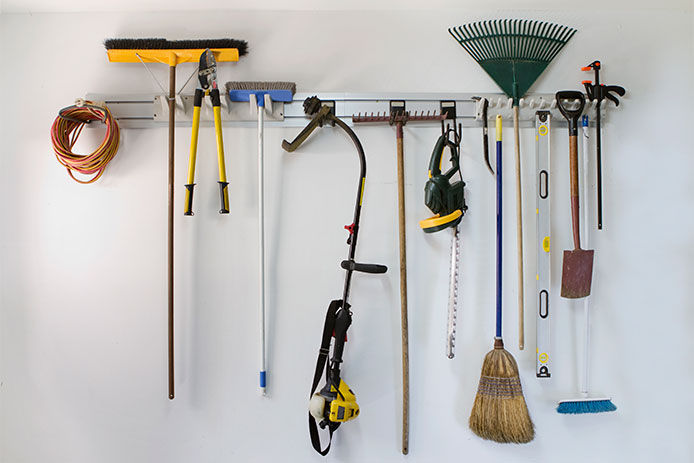
As you prepare for the winter months, it’s important to take care of your outdoor equipment. Clean and store garden tools, lawnmowers, and grills in a dry place to prevent rust and damage. Winterize lawn equipment and drain fuel to avoid clogs and other issues when you need to use them again in the spring. Cover or store outdoor furniture to protect it from the harsh winter weather.
14. Check & Clean Dryer Vents

Lint buildup in dryer vents is a common cause of house fires, especially in the winter. Take time to clean out your dryer vents to ensure they are free of lint and debris. This simple task improves your dryer’s efficiency and reduces the risk of a fire.
15. Maintain Driveways & Walkways

Before winter sets in, inspect your driveways and walkways for cracks or damage. Cold weather can worsen these issues, leading to larger, more costly repairs. Seal any cracks and clear away leaves or debris to prevent slippery conditions once snow and ice arrive. This will help ensure your driveways and walkways remain safe throughout the winter.
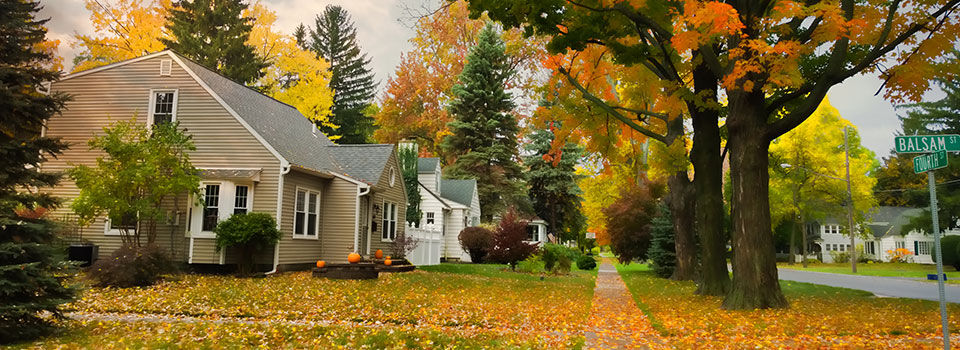
Just follow these 15 steps, and you’ll have the outside of your home prepped for winter in no time! Just remember, cooler temperatures can come quickly so start preparations early. You don’t want to miss your chance to protect your home from harsh winter weather.
